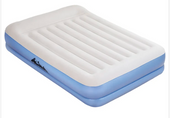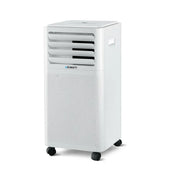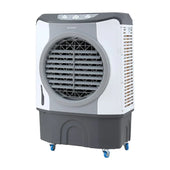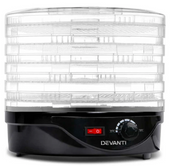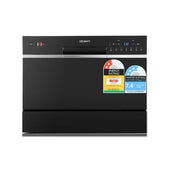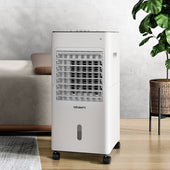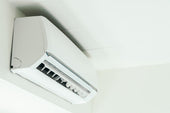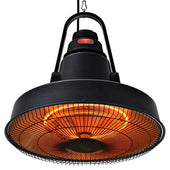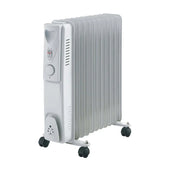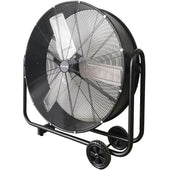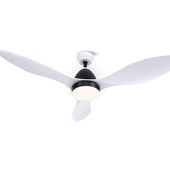Introduction to Choosing the Perfect Double Mattress
Selecting the right double mattress is a vital step towards ensuring optimal sleep quality and overall health. With a wide variety of options available in terms of materials, sizes, and firmness levels, finding the perfect fit can feel overwhelming. Factors like body weight, sleeping position, and personal preferences play a crucial role in the decision-making process.
Shoppers should also consider the mattress’s durability, motion isolation, and breathability to suit their lifestyle. It is helpful to research trusted brands and features such as memory foam, pocket springs, or hybrid designs. Taking time to identify individual needs guarantees long-term comfort and satisfaction.
Understanding the Importance of Mattress Size
Selecting the correct mattress size is crucial for both comfort and functionality. A double mattress, often referred to as a full-size mattress, typically measures 135 cm by 190 cm, providing adequate space for couples or individuals who desire extra room. During Days, the choice of mattress size affects not only sleeping comfort but also how well the bed fits into the bedroom layout.
Key factors to consider when determining the right size include:
- Room Dimensions: Ensure sufficient floor space remains for movement and furniture placement.
- Sleeping Needs: Couples may prefer a double over smaller options for spacious comfort.
- Growth Potential: For children or teens, a double offers longevity as they grow.
Proper sizing ensures practicality without sacrificing comfort.
Key Mattress Types and Their Benefits
Understanding the types of mattresses available helps buyers choose the best double mattress for their needs. Each type offers distinct advantages suited to different preferences and requirements.
Memory Foam
- Contour Support: Adjusts to body shape for tailored comfort.
- Pressure Relief: Ideal for those with joint or back pain.
- Motion Isolation: Minimises disturbance from partner movement.
Pocket-Sprung
- Individual Springs: Provides customised support for various sleeping positions.
- Breathable: Ensures cooler sleeping conditions.
- Durability: Offers longer lifespan due to robust spring structure.
Latex
- Eco-Friendly: Often made from natural materials.
- Responsive Support: Offers bounce without compromising firmness.
- Hypoallergenic: Resists dust mites and allergens effectively.
Hybrid
- Combination Features: Includes both foam and spring benefits.
- Versatility: Balances comfort, support, and airflow.
- Suitable for All Sleepers: Adaptable to diverse sleep styles.
Proper consideration of these types ensures optimal comfort and long-term satisfaction.
Decoding Mattress Materials: What Works Best for You
Understanding mattress materials is vital for choosing the right double mattress. Memory foam offers contouring support, ideal for pressure relief and isolating movement—excellent for couples. Latex, derived naturally or synthetically, provides durability and a responsive feel, suiting those who prefer a firmer touch. Hybrid mattresses combine coils with foam or latex, balancing support and comfort. Traditional innerspring designs prioritise breathability and bounce, suitable for sleepers who like a cool surface.
When evaluating options, consider cooling technologies like gel-infused memory foam or breathable fabrics for hot sleepers. Additionally, investigate certifications like CertiPUR-US or OEKO-TEX for eco-conscious preferences.
Firmness Levels: Finding the Right Support
Choosing the correct firmness level is crucial for ensuring comfort and proper spinal alignment. Firmness levels vary from soft to firm and cater to different sleeping preferences and body types. Factors like sleeping position, weight, and personal comfort play significant roles in determining the ideal level.
- Soft Mattresses: Best suited for side sleepers and lighter individuals, as they cushion pressure points like shoulders and hips.
- Medium Mattresses: Provide a versatile option, ideal for combination sleepers or couples with varying preferences.
- Firm Mattresses: Recommended for back and stomach sleepers or heavier individuals, offering enhanced support for lumbar alignment.
Testing the firmness in-store or exploring trial periods online can aid in finding the right balance.
Considering Sleep Positions and Personal Preferences
Selecting the right double mattress requires accounting for individual sleep positions and preferences. Sleepers who primarily rest on their back typically benefit from medium-firm mattresses that promote spinal alignment without causing discomfort. Side sleepers may favour softer mattresses that cushion pressure points, such as the shoulders and hips. In contrast, stomach sleepers often require firmer options to prevent sinking and maintain support.
Personal preferences also play a significant role. Some individuals may prioritise temperature regulation, favouring mattresses with cooling gel layers. Others might prefer motion isolation, especially if sharing the bed. Testing different options in-store can help ensure both comfort and compatibility with unique needs.
Evaluating Durability and Longevity
When assessing a double mattress, durability is a critical factor that determines its lifespan and performance over time. The materials used play a significant role, with options like high-density memory foam, natural latex, and pocketed innersprings offering excellent resilience. Look for mattresses with robust edge support, as this prevents sagging and deformation.
Consider the manufacturer's warranty as an indicator of confidence in the product's quality. Longevity can also depend on maintenance, so check care instructions for rotating or flipping. Opt for double mattresses with reinforced stitching and innovative layering technologies, ensuring long-term comfort and structural integrity without frequent replacements.
The Role of Budget: Balancing Cost and Quality
When selecting a double mattress, the budget plays a crucial role in determining the balance between cost and quality. Mattresses are available across a wide price range, and understanding what each price bracket offers is essential for making an informed choice.
- Low-cost options often include basic foam or innerspring mattresses. While affordable, they may lack durability and advanced features.
- Mid-range mattresses provide better quality with upgrades like memory foam or hybrid designs, delivering improved comfort and support.
- High-end options typically include premium materials, enhanced durability, and features such as cooling technologies or customisable firmness levels.
Shoppers should prioritise quality in alignment with their needs, ensuring the chosen mattress fits both sleep preferences and financial constraints.
In-Store vs Online Purchases: Pros and Cons
Choosing between buying a double mattress in-store or online involves weighing several factors. Each option offers distinct advantages and drawbacks depending on individual preferences and circumstances.
Pros of Buying In-Store
- Physical Testing: Allows the buyer to feel and test mattresses for comfort and firmness.
- Instant Availability: Purchases can often be taken home or delivered promptly.
- Expert Help: Store experts can offer tailored recommendations and explanations.
Cons of Buying In-Store
- Limited Time: Shoppers may feel rushed when testing multiple options.
- Higher Prices: Retail stores often have overhead costs, impacting pricing.
- Inconvenience: Requires travel, possibly during fixed hours.
Pros of Buying Online
- Convenience: Available anytime, without needing to visit a physical store.
- Competitive Pricing: Many brands offer exclusive online discounts and promotions.
- Customer Reviews: Access to diverse ratings and opinions aids decision-making.
Cons of Buying Online
- No Physical Testing: Buyers must rely on product descriptions and user reviews.
- Shipping Delays: Delivery times can vary based on location or stock levels.
- Returns: Returning a mattress can be more complicated than in-store exchanges.
Tips for Testing a Mattress Before Committing
- Lie Down in Your Usual Sleeping Position: Spend at least 10–15 minutes lying in the position you typically sleep to assess comfort and support. Test side, back, and stomach positions if relevant.
- Evaluate Edge Support: Sit on the edge to check if it sags or holds firm. Strong edge support is crucial for maximising space.
- Check Motion Transfer: If sharing the mattress, shift or jump lightly to observe disturbances. Less motion transfer ensures better sleep for couples.
- Press the Mattress: Apply hand pressure to test firmness and responsiveness. Ensure it isn’t too soft or overly springy.
- Wear Comfortable Clothing: Testing in similar attire to your sleepwear provides a more accurate feel.
- Discuss Trial Policies with the Retailer: Confirm in-home trial durations and return conditions. Longer trials allow better evaluation in real-life scenarios.
Reading Mattress Reviews and Ratings Effectively
To assess a double mattress accurately, focus on detailed and balanced reviews. Prioritise customer feedback highlighting durability, comfort, and material quality over generic comments. Look for reviews that discuss long-term performance rather than just initial impressions. Ratings should be examined for patterns; repeated concerns about firmness or sagging warrant caution.
Consider sources; reviews from verified buyers are more trustworthy compared to anonymous ones. Pay attention to how a mattress performs for different sleepers, such as side sleepers or those with back pain. Cross-reference ratings across various platforms to spot consistent trends. Use manufacturer responses to complaints as a measure of accountability.
Understanding Warranty and Return Policies
When purchasing a double mattress, it is crucial to scrutinise the warranty and return policies provided by the retailer or manufacturer. Warranties typically cover manufacturing defects such as sagging or loss of support and often range from 5 to 10 years. Buyers should ensure they understand the specific terms, such as whether repairs or replacements entail extra costs.
Return policies are equally important, as they offer flexibility if the mattress turns out to be unsuitable. Many brands provide a trial period, often lasting 30 to 100 nights. Buyers should confirm whether returns are free or if restocking fees apply. Reading fine print can prevent misunderstandings later.
Sustainability and Eco-Friendly Mattress Options
Choosing an eco-friendly mattress contributes to environmental sustainability while meeting comfort and health needs. Many brands provide mattresses made from natural, biodegradable, and non-toxic materials such as organic cotton, wool, and natural latex. These options minimise chemical exposure and reduce environmental impact during production and disposal.
Look for certifications like GOLS (Global Organic Latex Standard) and GOTS (Global Organic Textile Standard) that guarantee eco-conscious manufacturing practices. Some companies also utilise recyclable packaging and carbon-neutral shipping methods. Additionally, mattresses with renewable materials support sustainable forestry and farming.
Consumers prioritising ethical practices should investigate brands committed to reducing waste and protecting ecosystems. Transitioning to sustainable options helps meet personal needs while protecting the planet.
Accessories to Enhance Mattress Comfort
Enhancing the comfort of a double mattress can be achieved by utilising a variety of well-designed accessories. Mattress toppers are popular, offering an additional layer of cushioning while improving pressure relief and adjusting firmness levels. Protectors safeguard against spills, dust mites, and allergens, extending the lifespan of the mattress.
High-quality bed linens, such as cotton or bamboo sheets, contribute to a soft and breathable surface, creating a more luxurious feel. Pillows that complement individual sleeping positions also play a vital role in overall comfort and spinal alignment. Adjustable bed bases allow users to customise sleeping angles for added ergonomics and relaxation.
For temperature regulation, cooling mattress pads or electric blankets can provide customised climate control. Weighted blankets are another option, promoting stress relief and better sleep quality. When combined thoughtfully, these accessories cater to personal preferences and elevate sleep experiences.
Common Mistakes to Avoid When Buying a Double Mattress
- Neglecting Mattress Size Requirements Buyers often fail to measure the bedroom space or existing bed frame, leading to a mattress that doesn’t fit properly. Always confirm dimensions before purchase.
- Overlooking Personal Needs Purchasing a mattress without considering sleep position, body type, or firmness preference can result in discomfort. Assess individual needs for optimal support.
- Skipping the Comfort Test Opting for a mattress without trying it in-store or neglecting trial periods may lead to dissatisfaction. Testing ensures suitability.
- Focusing Solely on Price Prioritising cost over quality often leads to poor durability and sleep quality. Balance budget and value for the best option.
- Ignoring Warranty and Return Policies Many fail to read the fine print, risking difficulties in case of defects or dissatisfaction. Verify all terms beforehand.
Maintaining and Caring for Your Mattress Over Time
Proper mattress care ensures durability and hygiene. To maintain its lifespan, users should rotate the mattress every 3–6 months to prevent uneven wear. Using a mattress protector shields it from spills, allergens, and dust mites. Regular vacuuming removes dust and debris that can settle deep into the fabric.
Avoid jumping on the mattress, as this can damage internal springs or foam layers. Keep it on a supportive bed frame to maintain structural integrity. Allowing the mattress to air out periodically, especially if it’s memory foam, helps reduce odours and moisture build-up.
FAQs: Your Top Questions Answered
What are the standard dimensions of a double mattress?
A double mattress typically measures 135 cm wide and 190 cm long. However, variations like small doubles (120 cm x 190 cm) offer a more compact option for smaller rooms.
How should one choose the right firmness level?
Firmness depends on individual sleep preferences and body weight. Side sleepers often prefer softer mattresses, while back or stomach sleepers lean towards firmer options. Medium-firm offers balanced support.
What are the most durable mattress materials?
Memory foam, latex, and hybrid mattresses tend to last longer. Latex is highly resilient, while hybrids combine foam and coil benefits for longevity.
Can double mattresses support two adults comfortably?
Most double mattresses can accommodate two adults. If more space is desired, upgrading to a king size might be ideal.
How often should a mattress be replaced?
Experts advise replacing mattresses every 7–10 years to maintain support and hygiene. Regular rotation can extend its lifespan.
Conclusion: Investing in Your Sleep Quality
Investing in a double mattress is not just about purchasing a piece of furniture—it's about enhancing overall well-being and ensuring each night's sleep contributes to better health. By prioritising factors such as mattress material, firmness level, and individual sleeping preferences, buyers can create an optimal sleep environment. Durable, high-quality mattresses often provide long-term value by minimising the cost of frequent replacements. A well-chosen mattress can reduce discomfort, alleviate pressure points, and support proper spinal alignment. As sleep affects energy levels, mood, and productivity, the right double mattress serves as an investment in both comfort and quality of life.









